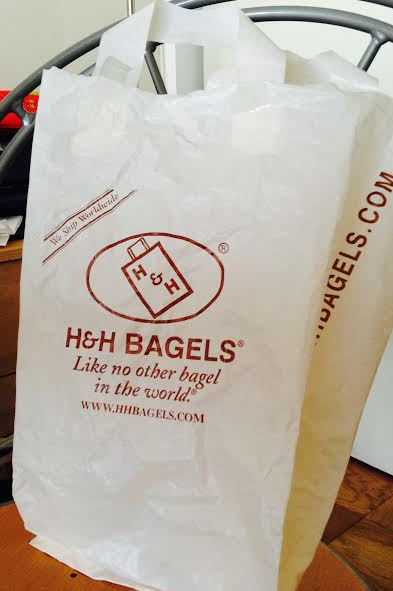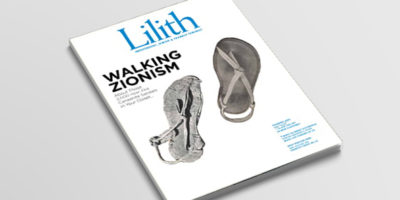
An Ode to Plastic Bags
"I’ve used mine as boot liners, shower caps, packing protectors, gloves for picking up gross things, doggie-bags for saving food, guarantors of a dry place to sit on a wet day, and as rain gear."
Here I am, across the world, in Siem Reap, Cambodia, sitting on the floor, stapler in hand, sharing smiles with women from a local shelter, entranced by the 100,000 hand-cut sheets of recycled plastic bags fluttering all around us. We are assembling a giant 255-meter naga (a mythical water serpent), which will rise in the Siem Reap River, its purpose to call attention to environmental issues and the nonsensical use — and discarding — of plastic bags. As an activist working on domestic violence and human trafficking projects in Cambodia, I’m lucky to meet Fleur Bourgeois Smith and Seckon Leong, talented artists committed to women’s issues and also the environment. We share a deep disgust for the countless bags of plastic we spot all around the world, floating in otherwise pristine waters, dangling from beautiful trees, and clogging gutters. Everywhere.
Back home in New York, I’m a green environmentalist who supports a ban. I join rallies: Ban-the-bag! Mandate a 10-cent bag charge! Just Say No! Frequently bombarded with alarming facts about the evils of plastic bags, I am dumbfounded each time I’m offered one for a single-item purchase I will clearly consume immediately.
The Jewish value of bal tashchit, not wasting, has been ingrained in me. I learned about this ethical principle in Jewish day school and summer camp. But I lived it, to an extreme degree, at home. In addition to being “green,” I am also greeneh. (In Yiddish this means I’m a “greenhorn,” from immigrant stock.) As I’ve described in these pages before (Spring 2012 to be precise), I’m the child of a Holocaust survivor, and I grew up learning that purpose and function could be found in almost every object. From tiny morsels of food to pickle jars, nothing reusable was ever thrown away.
Maddened by the collections of “stuff” cluttering my childhood house, I would sneer at the assemblage of old bags, announcing, “Seriously Mom, that store isn’t even open anymore.” At the grocery store, I would cringe with embarrassment when she would take extras, “just in case.”
And yet, despite my childhood discomfort, I find myself today (as maybe many of us do), returning to something that feels parentally familiar even though I foreswore it when I was younger. If only my mother could see the magnificent plastic bag collections I now house! They’re at my office, in my backpacks, in my bicycle basket, and even inside the reusable totes I use for groceries — just in case.
I sometimes feel I have good plastic-bag karma. As I stood barefoot washing dishes on a recent evening, I suddenly felt water streaming between my feet, coming from under my kitchen sink, home to a plastic bag collection that could rival any greeneh’s. I got down on my hands and knees and started removing things for the cleanup and repair.
Bag after bag after bag. First the flimsy grocery bags that fit perfectly in my metal trash can. Then the little ones, ideal for toting snacks or protecting my bike seat from the rain. Just as I was beginning to roll my eyes and make fun of myself for this mindboggling collection of bags so closely resembling the ones I ridiculed in childhood, I discovered my durable rectangular-shaped clear plastic bag with navy rope handles (home to a neatly folded assortment of high quality, large and sturdy bags) was now filled to the brim with water. It was a plastic-bag miracle! Gallons of water that could have damaged my floors were now contained in a bag my friends would have (had they known about it) insisted with anti-clutter passion that I throw away.
Some of these gems are impressively durable and will surely come in handy, while others are vintage, offering tangible reminders of stores and even industries that are no longer. I certainly couldn’t throw away J & R Music World’s strong blue plastic bag with white sturdy handles, the heavy-duty bright orange one from the fascinating thrift shop in Japan or the colorful striped one I toted around Croatia.
Whether I’m traveling around the world with my knapsack, biking around New York, or disposing of a dead mouse, plastic bags always come in handy. I’ve used mine as boot liners, shower caps, packing protectors, gloves for picking up gross things, doggie-bags for saving food, guarantors of a dry place to sit on a wet day, and as rain gear. These polyethylene products can certainly be repurposed, can possibly be recycled and can surely provoke a good public debate. Many are used only for a few seconds. Others are of such terrible quality that they serve no purpose — and yet will still take a thousand years to break down.
As a woman, I find myself enjoying an internal debate sparked by plastic bags as well. With a natural protective instinct, I’m eager to shield our environment from the terrible plastic waste, yet I’m thrilled to have a personal stockpile, knowing the protection the bags themselves offer. So it is with bittersweet feelings that I will attend the next Ban the Bag rally, likely with a plastic bag or two in my canvas tote, baggage I carry daily, reminding me that I am both green and greeneh.
Chana Widawski, a social worker, leads local park and community programming, educational trips around the globe, and works with survivors of abuse and violence.



